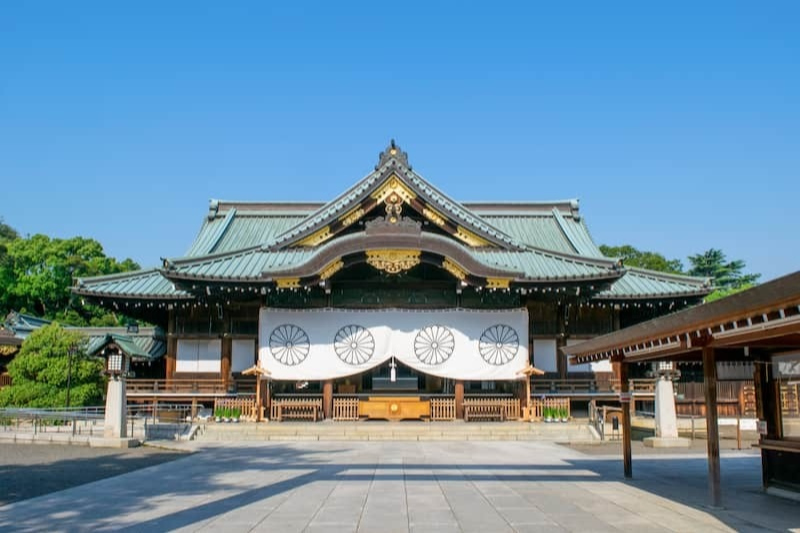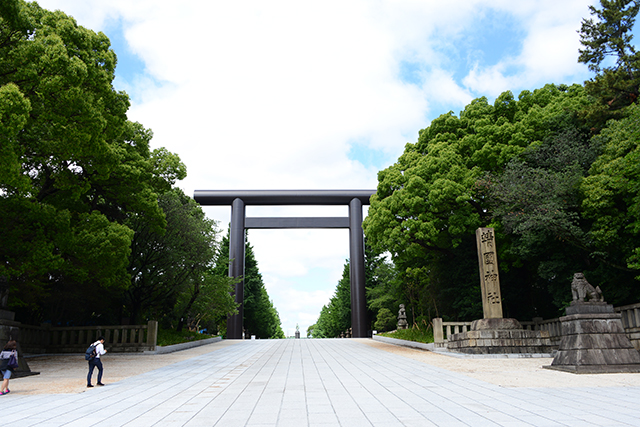


Yasukuni Shrine
A controversial Tokyo shrine dedicated to the souls of Japan's war dead.
Located in central Tokyo, Yasukuni Shrine is dedicated to the spirits of approximately 2.5 million men, women, and children who have died in service of Japan in conflicts since 1869.
History of the Shrine
Yasukuni Shrine, meaning 'Pacifying the Nation Shrine', was founded in 1869 by Emperor Meiji. Its original purpose was to honor the souls of those who died fighting for the Emperor's cause during the Boshin War, the civil war that led to the Meiji Restoration. The shrine's central idea is that the souls of those who sacrificed their lives for the nation are enshrined as 'eirei'—heroic spirits—and collectively venerated as kami, or deities.
Over the decades, the scope of enshrinement expanded to include soldiers who died in subsequent conflicts, including the Sino-Japanese Wars, the Russo-Japanese War, and World War II. In 1978, the shrine controversially and secretly enshrined 14 convicted Class-A war criminals from WWII, including wartime Prime Minister Hideki Tojo. This act made the shrine a focal point of international political controversy, particularly with China and South Korea. Visits to the shrine by Japanese prime ministers and cabinet members are often met with diplomatic protests.
The Enshrined Kami
Unlike other shrines that worship mythological or natural kami, Yasukuni is dedicated to the spirits of specific historical individuals who died in war. The core belief of the shrine is that these souls, approximately 2.46 million of them, are transformed into a single collective deity or 'kami' upon enshrinement. This divine collective is believed to watch over and protect the nation of Japan.
This concept of enshrinement is central to the controversy. According to shrine doctrine, once a soul is enshrined, it cannot be removed. This means the spirits of the convicted war criminals are considered to be part of the collective kami, making it impossible for many to view the shrine as a simple place of remembrance. For its supporters, praying at Yasukuni is an act of gratitude and respect for those who made the ultimate sacrifice for their country.
What to See
The shrine's grounds are spacious and marked by a series of massive torii gates. Unlike most shrines, Yasukuni has a distinct military atmosphere. The grounds include the Yushukan, a large and controversial war museum that presents a nationalistic perspective on Japan's modern military history, portraying its past wars as acts of liberation for Asia. The museum displays military artifacts, including fighter planes and tanks.
The main shrine building is a large, solemn structure in the 'shinmei-zukuri' style. The shrine is also a famous spot for viewing cherry blossoms, with a 'specimen tree' that the meteorological agency uses to officially declare the start of cherry blossom season in Tokyo.
Major Festivals
The shrine holds major festivals in the spring ('Shunki Reitaisai') and autumn ('Shuki Reitaisai'). These festivals are attended by members of the Imperial Family and high-ranking politicians, and feature traditional court music and dance. The 'Mitama Matsuri' in mid-July is a beautiful summer festival meant to console the spirits of the dead. Over 30,000 lanterns are lit, illuminating the shrine grounds in a spectacular display that attracts huge crowds for a festive, Obon-like atmosphere.
Support Yasukuni Shrine
Your participation helps preserve this sacred site for future generations. Every digital offering contributes to real shrine preservation efforts across Japan.
By making an offering, you become part of a global community honoring Japanese spiritual traditions and supporting the cultural heritage that has been cherished for centuries.